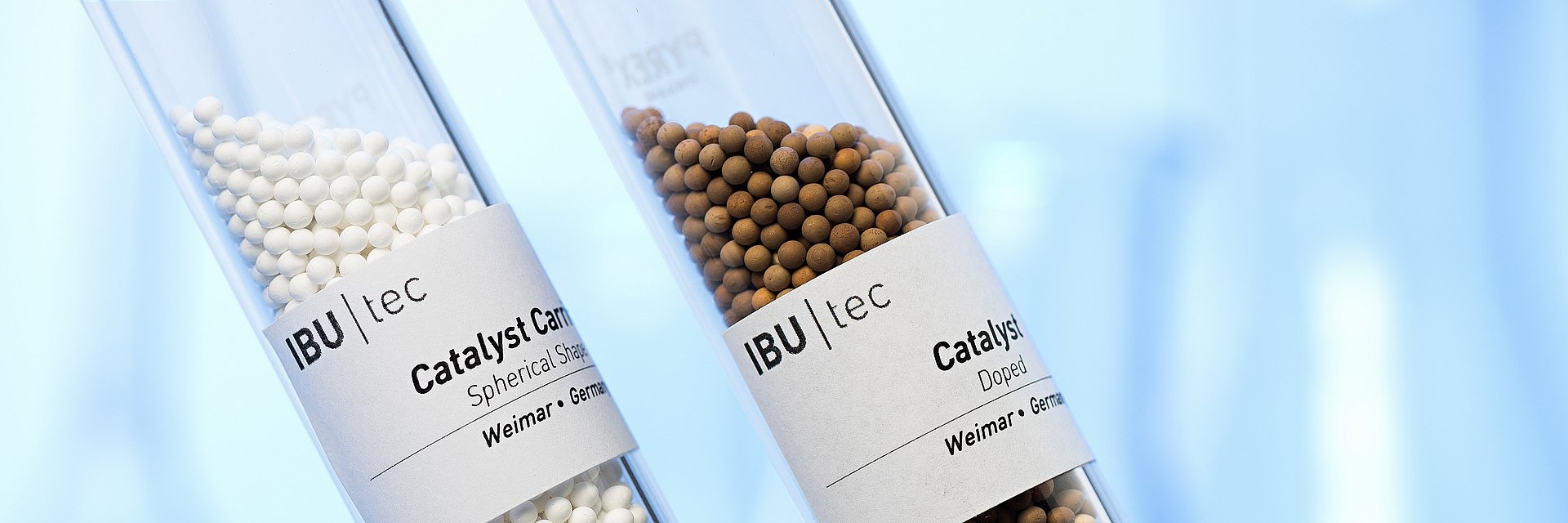Doping in Pulsation Reactors
At IBU-tec, doping treatments are carried out in our pulsation reactors. We have developed a new method consisting of a thermal shock calcination followed by a sharp cooling step. The base material and the dopant are prepared as a solution, a suspension or a wet powder. To achieve the right material properties, the mixing proportions have to be precisely adjusted.
When the mixture is injected into the reaction chamber of the pulsation reactor, they undergo simultaneous drying and calcination, so that the doping atoms are fixed in the base material particles. Optimal results depend on the correct selection of reaction parameters such as the particle temperature and residence time.
The advantage of using pulsation reactors for doping processes is, that the dopants can be distributed very finely and homogeneously on the base material, which is especially important for products to be used in electronics applications. The method is also much more efficient than conventional processes and enables considerably more efficient use of the materials. When the materials are costly, such as precious metals, this achieves very significant cost savings.
In our pulsation reactors we have already garnered a substantial body of experience with a variety of ceramic materials, for example with aluminum oxide and zirconium oxide, both as base material and as dopants. We have also tested doping with yttrium oxide and magnesium oxide in this system.
If you need help with projects that involve doping, please contact us – we will be very glad to advise you.

